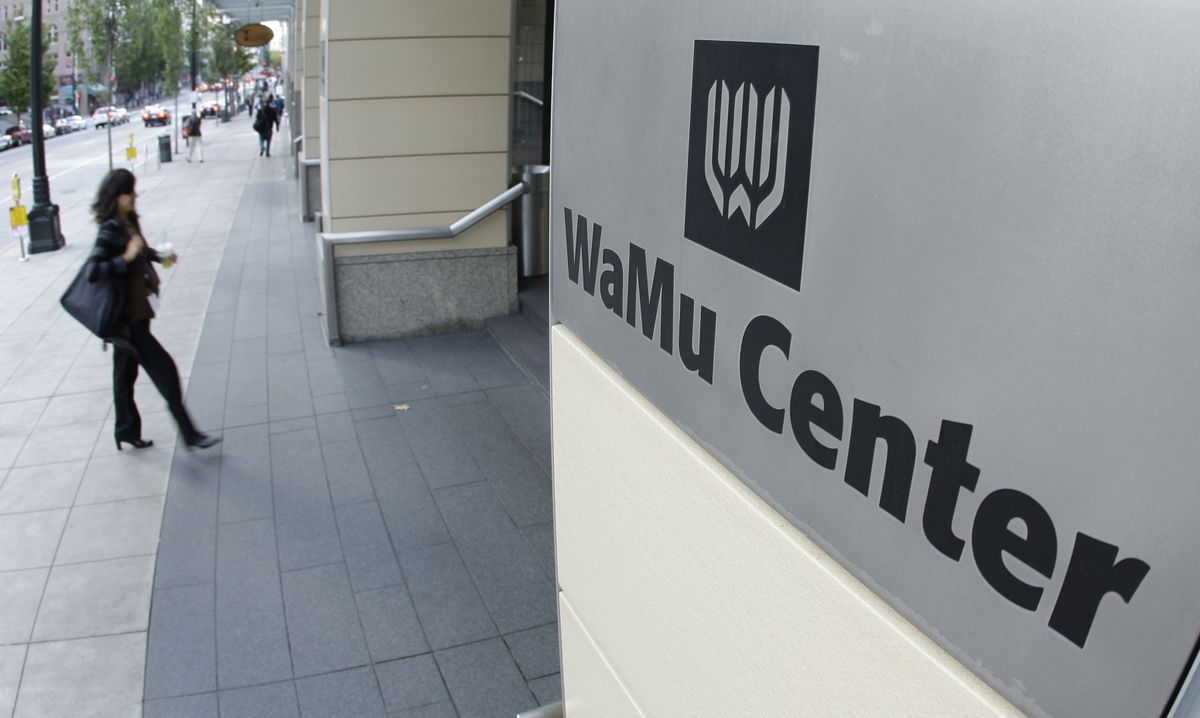Seattle awash in office space
Construction, layoffs a ‘double-whammy’

The demise of Washington Mutual and cutbacks by other large tenants are taking their toll on Seattle’s commercial real estate market.
And the timing couldn’t be worse – construction is wrapping up on a slew of new office and retail projects in the high-tech area.
“We’ve got kind of a double-whammy headed at us in downtown Seattle,” said Craig Hill, a senior vice president at the Seattle office of Grubb & Ellis Co. “There’s a lot of new construction headed our way.”
About 5.6 million square feet of new office space is under construction in Seattle and its suburbs, with about 2 million square feet of it in the city expected to be completed this year, according to Grubb & Ellis.
Roughly 37 percent of the office space under construction has been leased, but that figure drops to 10 percent when you exclude the Amazon.com complex being built in downtown Seattle by Vulcan Inc., the real estate firm owned by Microsoft co-founder Paul Allen.
Employers slashing jobs in response to the worsening economy have helped drive up vacancies across all commercial property types.
So far this year, several major companies have announced layoffs in the Seattle area, including Microsoft, Qwest Communications International, DHL Express, Sun Microsystems, the Seattle Post-Intelligencer and Washington Mutual, which laid off 3,400 workers alone.
JPMorgan Chase, which took over Washington Mutual late last year, is vacating most of WaMu’s offices in the city, a move that will dump more than 700,000 square feet of office space on the market.
“One of the biggest problems that we’ve had is WaMu,” Hill said. “That was a big hammer to the marketplace, and then the economy changed so fast on these developers that they couldn’t change course.”
The firm forecasts office vacancies will climb to nearly 20 percent by the end of this year – as bad as it was following the dot-com bust in 2000.
Another firm, Marcus & Millichap Real Estate Investment Services, forecasts office vacancies in the Seattle-Tacoma market jumping to 15.7 percent this year, up from 11 percent in 2008. But that’s still better than the expected 17.6 percent nationally.
Not surprisingly, sales of office buildings are down about 80 percent so far this year versus the same time last year, according to Grubb & Ellis.
“Most of the entire market is static right now,” said Jim Bowles, senior managing director at CB Richard Ellis Inc.’s Washington state arm. “But there’s plenty of activity in terms of people discussing the potential of selling buildings.”
Meanwhile, landlords are under pressure to sweeten concessions to keep tenants from going elsewhere. Some landlords, for example, are offering several months of free rent.
Asking rents range from $32.85 to $25.60 a square foot, but tenants can haggle them down by as much as 30 percent, according to a Grubb & Ellis report.
There are some bright spots, however, such as the wealthy suburb of Bellevue.
“The Bellevue market is relatively healthy,” Bowles notes. “There’s been a number of properties that have been built in the last several years and almost all of those have been leased.”
Trends are somewhat better in Seattle’s industrial space market, with vacancy rates that are lower than nearly everywhere else in the nation, said Patrick Mullen, a research analyst with Grubb & Ellis.
Marcus & Millichap projects the vacancy rate will climb to 7.9 percent this year from 6.4 percent in 2008. The firm anticipates a rate of 12.6 percent nationally.
Unemployed renters, who often move in with friends or family, have pushed up the number of empty apartments. The vacancy rate could rise to 7.5 percent this year, up from 5.6 percent last year, Marcus & Millichap forecasts. That’s on par with the firm’s 7.7 percent rate for the U.S.
Sales of apartment buildings, meanwhile, have slowed to a trickle. So far this year, 11 apartment buildings in the Seattle market have sold.
The average rent in the Seattle area was $988 last month, according to Dupre-Scott Apartment Advisors.
Landlords are stepping up incentives, including lowering rents to woo new tenants. Unsold condos being offered for lease are adding to the available inventory of apartments, giving renters more bargaining power.
Like many other U.S. cities wrestling with the economic downturn, Seattle’s retail market has been hurting.
Major chains like Circuit City Stores have gone under, driving mall vacancies higher. Many retailers are asking landlords to renegotiate the terms of their leases, Bowles said.
Marcus & Millichap expects retail vacancies will hit 6.4 percent this year, up from 4.7 percent last year. Nationally, it projects a 10.9 percent vacancy rate.
Still, some retail projects are in the works and scheduled to open this year, including one with a handful of ultra-luxury stores.
The Bravern, a high-end residential and commercial development in Bellevue, is set to open in September with tenants including Hermes, Louis Vuitton, Jimmy Choo and Neiman Marcus.
Another retail-residential hybrid, Thornton Place in downtown Seattle, is scheduled to open later this year.